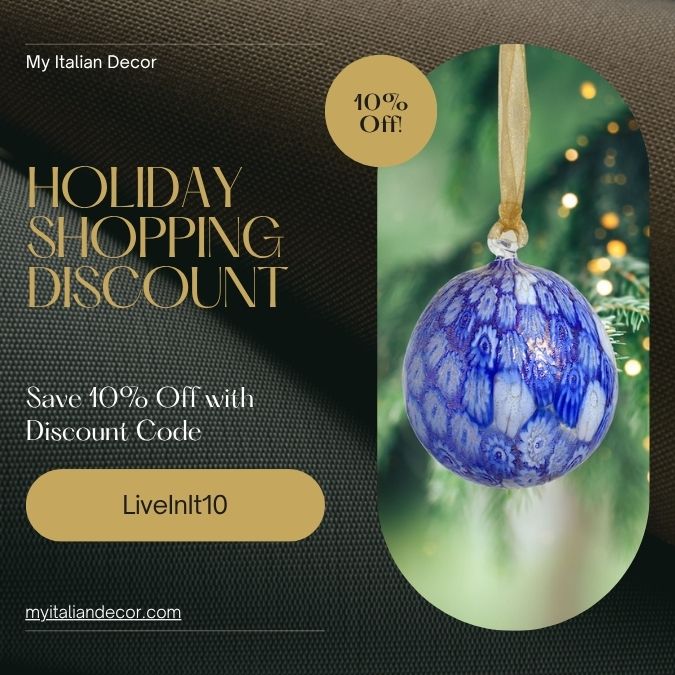Close your eyes and imagine travelling back in time. We are in Siena in the 1400s. Streets are crowded with people, animals, thieves, and pilgrims. Rich families live most of the time within the safe walls of their mansions.
In the 15th century, nobles built their homes like small fortified castles, with all the comforts and luxury available at the time. While Florence had wealthy families ruling the city—the most famous being the Medicis—Siena, Florence’s eternal rival, also had noble families influencing the city’s life. Among the most important were the Piccolomini, whose illustrious representative, Enea Silvio, became Pope Pius II in 1458.
Pope Pius II
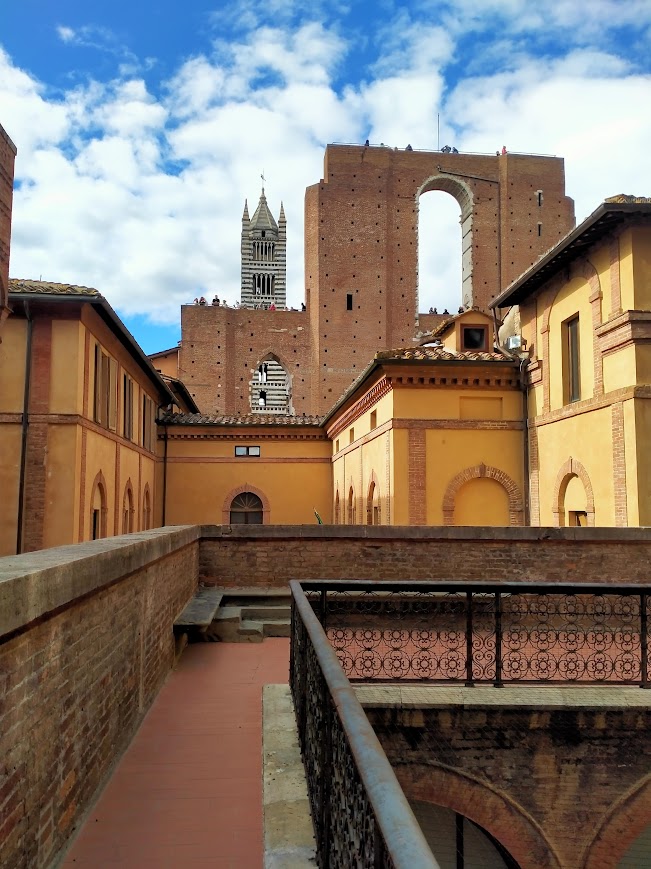
Pope Pius II is considered one of the most significant popes of the 15th century. He was known for his diplomatic skills and for taking action to defend Christianity from the Turkish threat. Additionally, he was one of the most important humanists of his era due to his profound knowledge of classical culture.
La città ideale – The Ideal City
Born in Corsignano in 1405 (now known as the city of Pienza in Val d’Orcia), Pope Pius II returned there during a papal trip in 1462. After noticing the state of degradation in his beloved town, he decided to rebuild it. His vision went beyond renovation—he wanted to create an “ideal city.” With the right means and people, he made it happen. The idyllic town was renamed Pienza, meaning “City of Pius.” It became an example of humanistic architecture and an inspiration for many European cities.
Siena & Palazzo delle Papesse
The Piccolomini family’s influence in Siena is still evident today through the imposing buildings where they lived. Among them is Palazzo delle Papesse, one of the most impressive constructions in humanistic Siena. The palace was commissioned by Pius II’s sisters, Laudomia and Caterina, who were known as Papesse, hence the palace’s name.
Caterina Piccolomini
Construction of the palace began in 1460, and all the work was personally supervised by Caterina herself. She wanted it to resemble Palazzo Medici in Florence, which she admired. Thus, Caterina’s palazzo is partly inspired by Palazzo Medici, with large portals and internal courtyards. However, the windows, featuring pointed arches, maintain the unmistakable Sienese Gothic style. The palace’s design was by Bernardo Rossellino, the architect from Pienza, with contributions from Sienese master Antonio Federighi.
Famous Guests
Over the centuries, the palace hosted many important personalities. In 1633, one of the most notable guests was the scientist Galileo Galilei. He stayed within the palace walls while conducting his studies, enjoying the hospitality of the Piccolomini family.
Banca d’Italia and Modern Times
In 1884, the building was purchased by the Banca Nazionale del Regno (later the Bank of Italy). Architect Augusto Corbi modified it to suit its new purpose. From 1998 to 2008, it became a centre for contemporary art under the Municipality of Siena. As of June 2024, the palace has been owned by Opera Laboratori, an organisation specialising in museum management and cultural planning.
The Courtyard and Terrace
The internal courtyard of Palazzo delle Papesse, with its frescoed loggia, features beautiful images of fruit, flowers, allegorical, and mythological figures. Today, it serves as a meeting point in the heart of Siena. Just as in the times of the Piccolominis, visitors can pause, have a drink, read a book, or simply enjoy the atmosphere.
Wandering into the courtyard by chance on a day when rain was in the air, I lingered, sipping a coffee and absorbing the timeless atmosphere. It was easy to imagine Caterina Piccolomini doing the same, perhaps reading a book under the shelter of the loggia.
From the courtyard, I entered the palace and climbed the stairs to a terrace with a spectacular view. High walls shielded me from prying eyes, while the Cathedral’s façade dominated the scene, almost like a protective giant. I could picture Caterina and her sister sitting on the stone wall, reading or painting the view.
The Altana
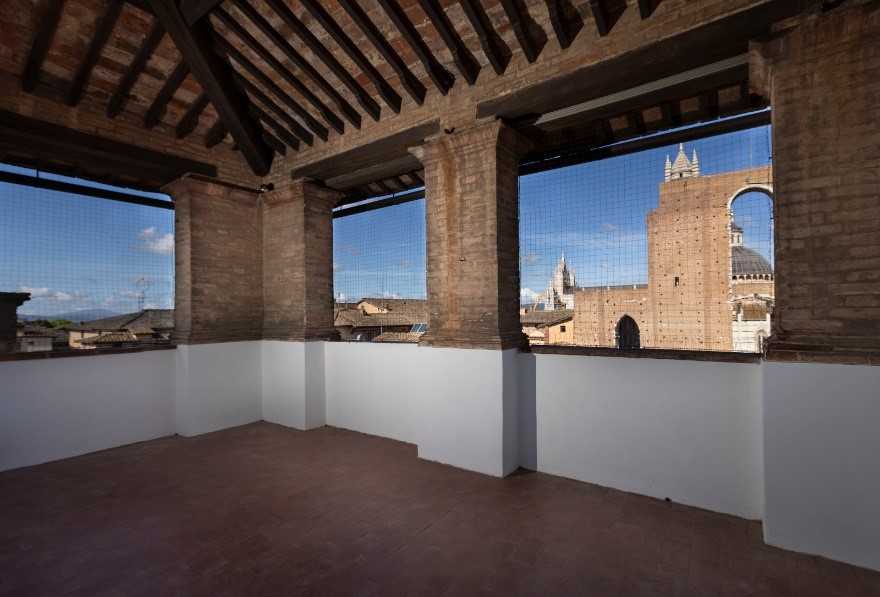
One more flight of stairs led to a small terrace that looked like a kitchen. It continued to the altana, a roof terrace offering breathtaking views of Siena. It felt like a time machine, transporting me to the past while I walked above the terracotta rooftops. Galileo spent a lot of time here in 1633, observing the moon through his telescope. It was here that he discovered the moon’s surface was dotted with mountains and craters, challenging the belief that it was perfectly spherical.
The Vault
Finally, I visited the vault, known as il caveau in Italian. This space, once used by the Bank of Italy to store valuable items, now hosts contemporary art exhibitions. Descending two flights of stairs, I entered this space of steel walls and metal cabinets. The darkness and silence created a hauntingly evocative atmosphere, ideal for the art exhibitions it now houses. Until March 2025, it is the site of Julio Park’s vibrant art, which contrasts beautifully with the terracotta surroundings.
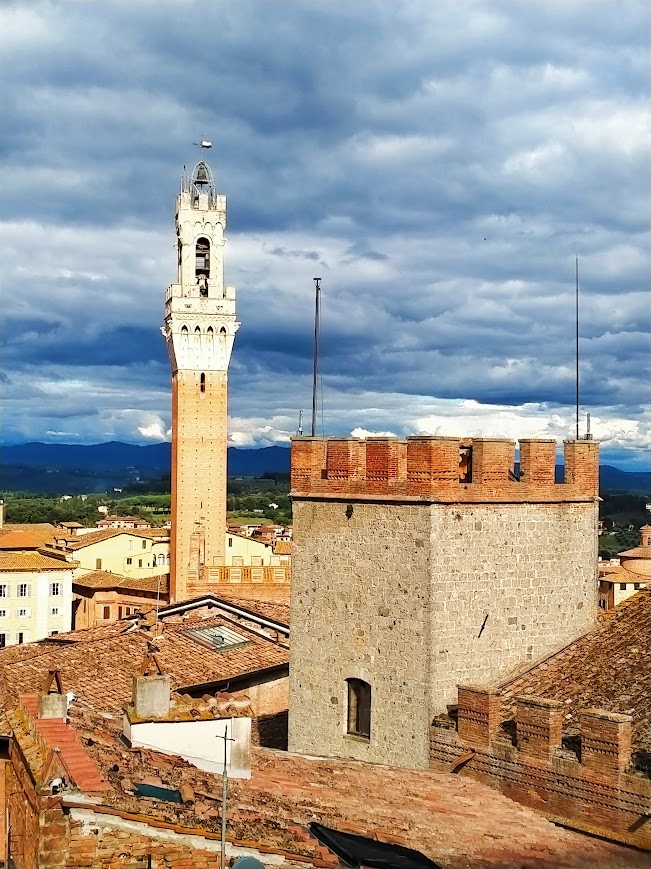
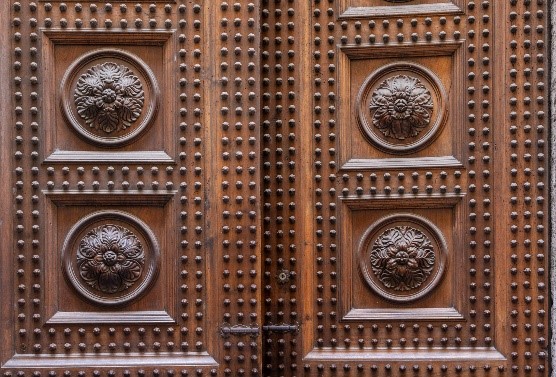
Siena, with its blend of old and new, classic and contemporary, is truly a journey through time.
Vocabulary
15th century | quindicesimo secolo
Small fortified castles | castellari
Building | edificio
Palace | palazzo
Floor | piano
Stairs | scale
Window | finestra
Rooftop | altana
Terrace | terrazza
Courtyard | cortile, corte
Vault | caveau
Art exhibition | mostra d’arte


